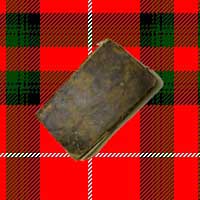
home
Execution of the Manchester Rebels Kennington Common, Surrey, July 30th, 1746 |
Captain James "Jemmy" Dawson and eight others were dragged on hurdles from the new jail in Southwark to Kennington Common, and there hanged. After being suspended for three minutes from the gallows, their bodies were stripped naked and cut down, in order to undergo the operation of beheading and disemboweling. Colonel Towneley was the first that was laid upon the block, but the executioner observed that the body retained some signs of life so he struck it violently on the breast, for the humane purpose of rendering it quite insensible for the remaining portion of the punishment. Since this did not have the desired effect, he cut the unfortunate gentleman's throat. The shocking ceremony of taking out the heart and throwing the bowels into the fire was then gone through, after which the head was separated from the body with a cleaver, and both were put into a coffin. The rest of the bodies were thus treated in succession; and on throwing the last heart into the fire, which was that of young Dawson, the executioner cried, "God save King George!" and the spectators responded with a shout. Although the rabble had hooted the unhappy gentlemen on the passage to and from their trials, it was remarked that at the execution their fate excited considerable pity, mingled with admiration of their courage. Two circumstances contributed to increase the public sympathy on this occasion, and caused it to be more generally expressed. The first was, the appearance at the place of execution of a youthful brother of one of the culprits, by the name of Deacon, himself a culprit, and also under sentence of death for the same crime, but who had been permitted to attend the last scene of his brother's life in a coach along with a guard. The other was the fact of a young and beautiful woman, Kitty, to whom Dawson had been betrothed, actually attending to witness his execution (see Ballad of Jemmy Dawson). Most of the rebel lords, and of the others who had borne a share in the Scottish rising of 1745, and who were found guilty of treason, were executed on Tower Hill, as already stated. Their, heads, as well as the heads of those executed here, were afterwards set up on poles on the top of Temple Bar, where we have already seen them bleaching in the sun and rain. Here also was hung the notorious highwayman, "Jerry Abershaw;" his body being afterwards hung in chains on a gibbet on Wimbledon Common. |